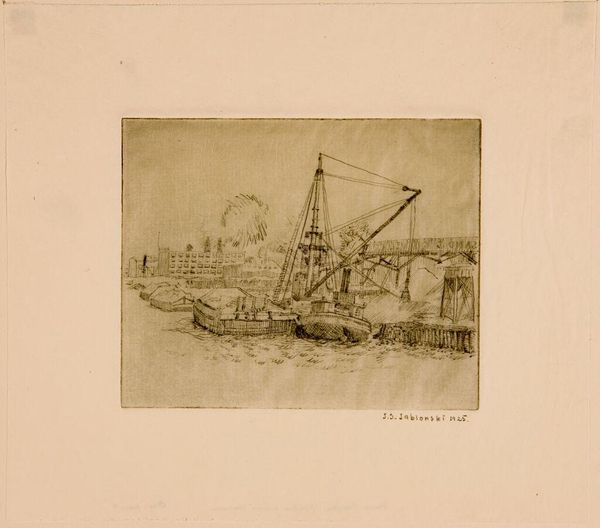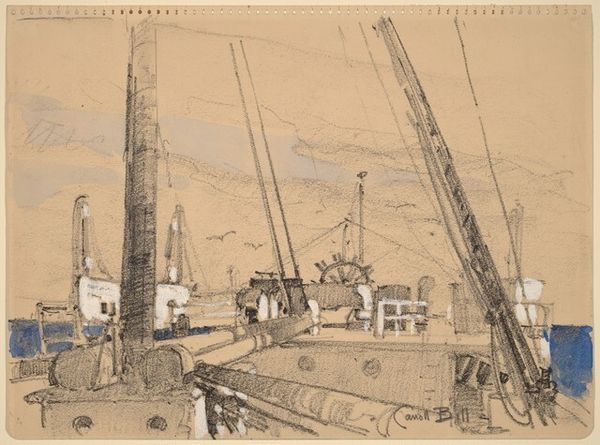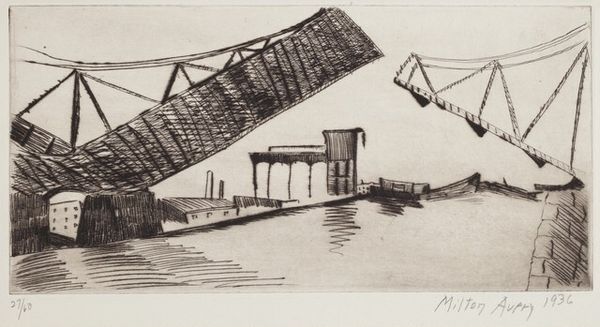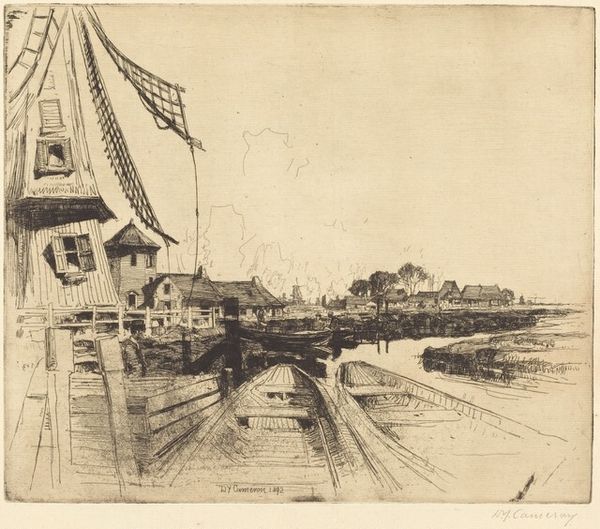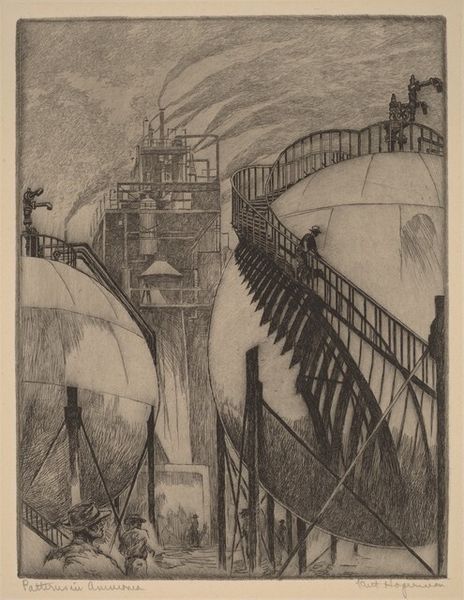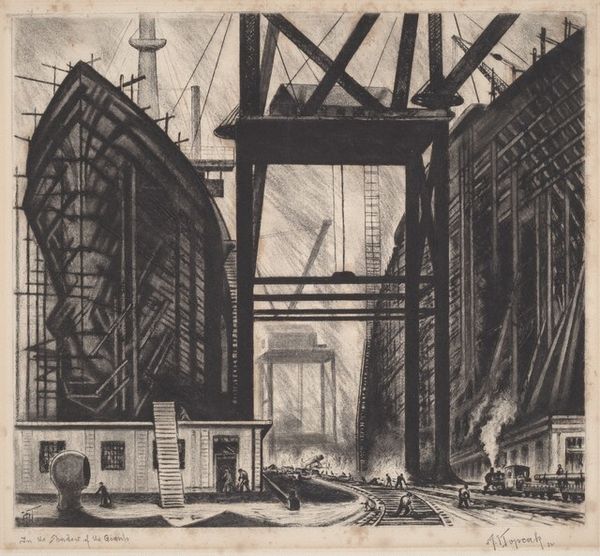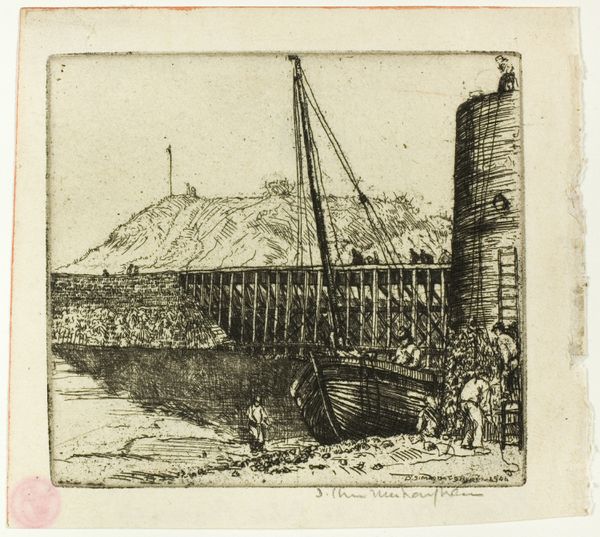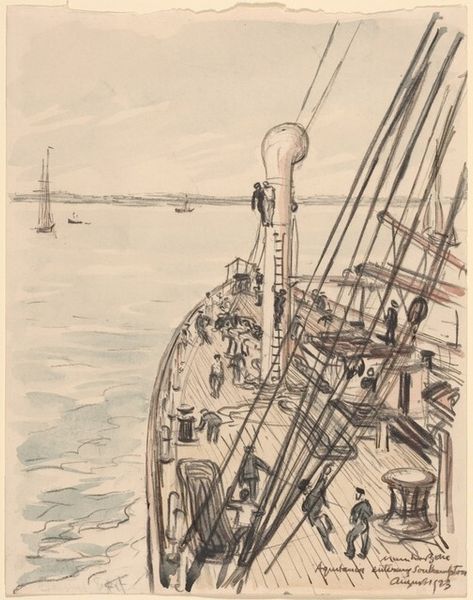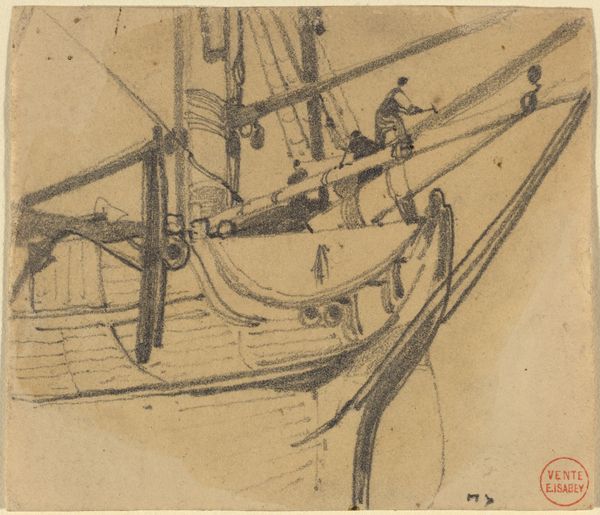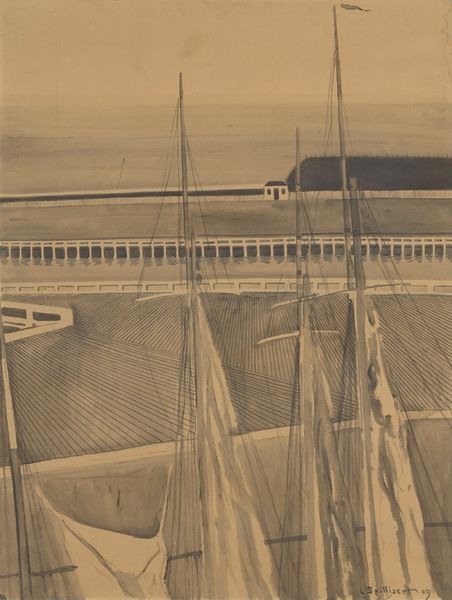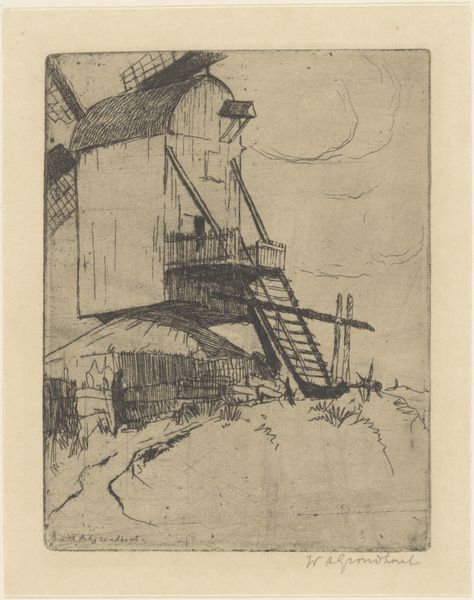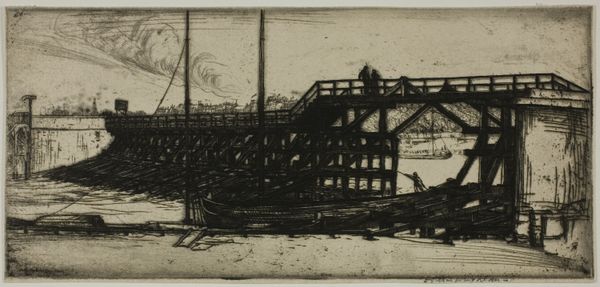
print, etching
# print
#
etching
#
landscape
#
cityscape
#
realism
Dimensions: Image: 220 x 228 mm Sheet: 260 x 257 mm
Copyright: National Gallery of Art: CC0 1.0
Curator: Orville Houghton Peets’s etching, titled "The Crossing," was created around 1930. Its somber tones strike me immediately. A lone road climbs a small bridge, punctuated by the geometry of telephone poles and stark railway cars. What is your initial response to this scene? Editor: The first thing that catches my eye is the intense linework – the density and arrangement really drive the composition. There's a clear effort to render texture, particularly within the bridge's undercarriage, by layering these lines with great precision. Curator: Absolutely. It's fascinating how Peets captures the changing American landscape. Notice how the telephone poles dominate, acting as visual anchors that suggest a rapid industrial expansion impacting even the most mundane corners of rural life. The "crossing" perhaps symbolizes a literal intersection, but also a time of societal transition. Editor: It is all in how these things organize themselves as visual information – semiotics are at play! The careful organization of forms – road, bridge, wires – communicates movement and space, constructing a believable reality within a limited tonal range. It has a rather formal balance, too. Curator: True, and the absence of human figures within such a realistically depicted space underscores that sense of transition and alienation, too. The societal costs often erased or conveniently overlooked by progress narratives. This aesthetic approach makes us ask, "Whose stories are being centered here, and whose are excluded?". Editor: That is interesting. My understanding is more inclined to the relationship between different planes within the work – the textural contrast, say, between the sky and bridge through etching, allows us to read and differentiate space, imbuing it all with movement and three-dimensionality. Curator: I see that, but for me, Peets delivers a reminder that "progress" has consequences. Those lines, rendered with so much attention to technique, also tie our freedom and mobility inextricably to industrial infrastructure – and to the workers, resources, and communities needed to power all that. Editor: I can understand why that rings true for you; ultimately, its testament to how effective his arrangement and structure of this piece creates a sense of movement beyond a mere description of locale!
Comments
No comments
Be the first to comment and join the conversation on the ultimate creative platform.
